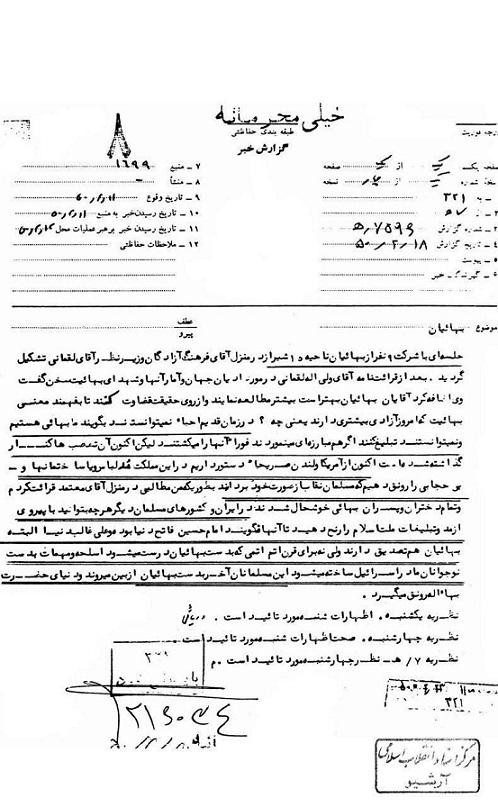The historical measures of Baha’ism against veiling culture in Iran can be considered as an evidence for the involvement of the Baha’ism organization in norm-breaking measures in Shiraz city as the origin of movement and the city paid attention by this cult. An organization which is trying to remove the Islamic culture by negative induces by the name of making community.
The norm-breaking gathering and unveiling several teenagers in Shiraz city made some to relate this event to the deviant cult of Baha’ism due to its precedents in unveiling and campaigning against veiling and chastity in Iran.
According IRNA, a program entitled the universal day of skate boarding in civil gathering court dated Khordad, 31, 1401. A number of female teenagers participating in the gathering were seen unveiling wearing unusual clothes. The police of Shiraz city announced this issue on Friday that unveiling and norm breaking have been occurred at the end of this ceremony[1].
This article is trying to investigate the historical precedence of Baha’ism in norm breaking and campaigning against the Islamic rituals and the possibility of Baha’ism’s playing role in Shiraz event:
- The precedence of the Baha’i leaders’ speech and method of living against the Islamic veiling:
The self-proclaimed prophet of Baha’ism has confessed for his struggles to remove Shia religion[2] and clarified his enmity against the real Islam. So, it has campaigned against the Islamic manifestations such as veiling and chastity culture. As the self-proclaimed prophet of Baha’ism has considered veiling of women as a barrier for development: “Women’s veiling prevents education[3].”
Consequently, the Baha’i leaders have misused women’s characters applying contradictory approach. In one side, they are introducing the Islamic cover as insulting with the character as a barrier for social and scientific development[4] and on the other side, they reject women’s merits to participate at the highest center for their decision making (the universal house of justice)[5].
- Making an example of nakedness and unchastity: The Baha’is veiling and chastity and they are constantly trying to make an example of it for the community. During Babism periods of time, the onset of preaching unveiling and unchastity can be looked for.
Qorratul Ein was the first Babi woman who prepared the facilities for preaching unveiling and unchastity in Islamic communities particularly in Iran by unveiling[6] and preaching men and women’s sexual affairs[7].
The fulfillment of the policies of fighting against veiling and chastity in Iran formally: The precedence of the Baha’ism cult indicates that DURING Pahlavi periods of time, this cult was trying to destroy the veiling and chastity culture. According to SAVAK documents: “It is ordered by America and London for clothes’ fashions to be unveiling in order to make the Islamic nation suffer by obeying and following fashion and propaganda…[۸]”
Yes, the historical measures of Baha’ism to campaign against the Islamic manifestations of veiling and chastity culture can be assumed as an evidence and document for norm breaking in Shiraz city (as the origin for Baha’ism movement).

[۱] IRNA correspondence, the news title: Demonstrating to support veiling and chastity in Shiraz city: The news code: 84800356. Dated: Tir, 3rd, 1401 S.H.
[۲] Ishraq Khawari, the heavenly food, Bija: the national institute of the faith press, 129 Badi’a, Vol. 4, p. 141.
[۳] Fadhel Mazandarani, the epistle of Amr & Khalq, Germany: the national assembly of publishing the faith works in Persian and Arabic languages, 3rdd edition, 1086 A.D., Vol. 3, p. 341.
[۴] Ibid.
[۵] Refer to Ishraq Khawari, the treasury of limitations and commandments, Bija: the national institute of the faith press, 134 Badi’a, p. 219.
[۶] Ishraq Khawari, Mataleul Anwar, Bija: the national institute of the faith press, 134 Badi’a, pp. 263-264.
[۷] A group of authors, the deviant cults, Qom: the specialized center of Mahdism Qom, p. 164: narrated by: Zohorul Haqq, p. 182.
[۸] SAVAK’s hearings from the secret meetings of the Baha’is dated: 1350/02/18.






